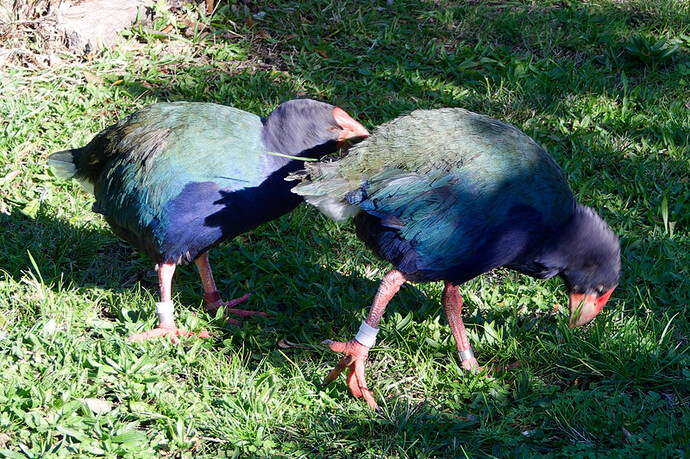The word taonga (pronounced tah-ong-ah) is from the indigenous Māori language and means, in this context, something treasured.
This fellow’s name is Orbell. He is named after Geoffrey Orbell who, in 1948, discovered the Takahē (tah-ka-hey) in an area of Fiordland, in New Zealand’s South Island, officially changing its status from “extinct” (which had been assumed since 1898) to “rare”. In modern terms, it was downgraded from “Nationally Critical” to “Nationally Vulnerable” in 2016 — a positive sign that conservation efforts are working.
There is now a population of around 500 birds, growing at ~8% per year, and Orbell is a great ambassador for them. He is 24 years old (in the wild they only live to 18 or so) and wanders around in the Zealandia Te Māra a Tāne ecosanctuary in Wellington, allowing visitors to get very close.
This shot was taken with my new superzoom 150-450mm which has turned the yucky, dusty path into a beautiful, almost neutral bokeh backdrop. Orbell doesn’t demand superzooms, though. I was in the sanctuary today and saw someone filming him on their smartphone and I expect the footage will look great, as he was only a metre or so away.
Orbell the Takahē

